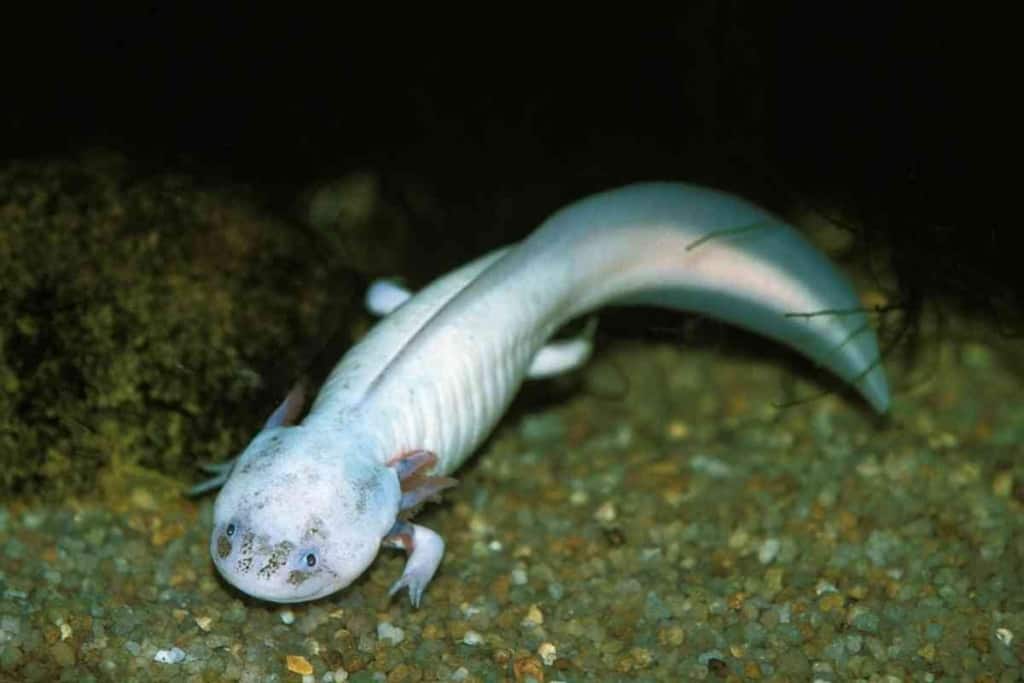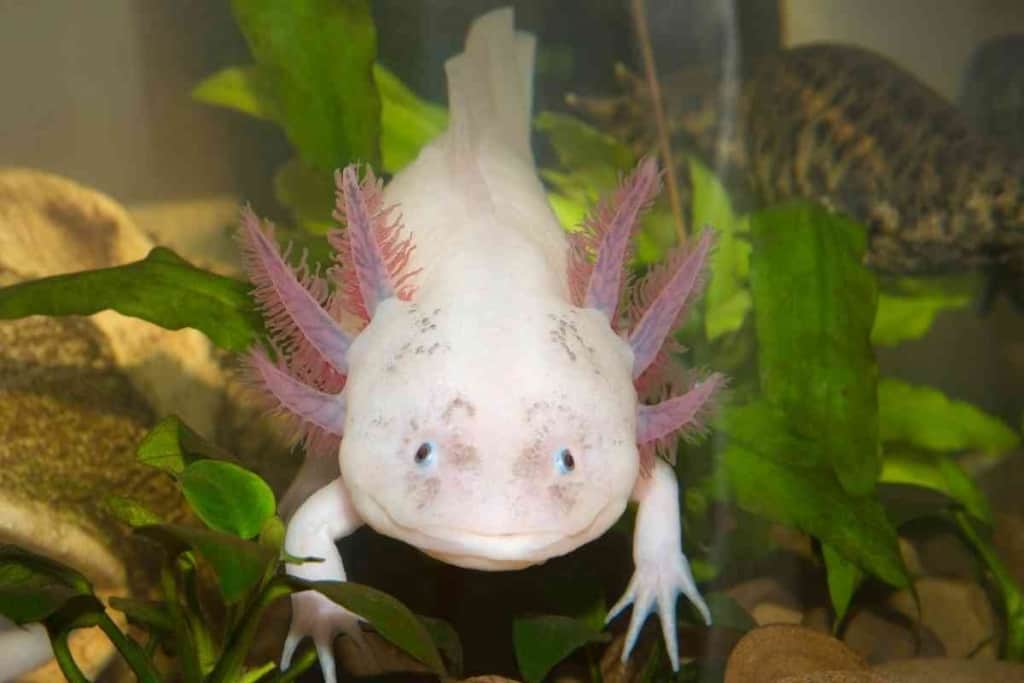Do Axolotl Change Color? Why And How?
Exquisite and rare, axolotls are creatures that have always intrigued mankind. A question most who encounter them ask is whether or not axolotls change color.

Do Axolotls Change Color?
Yes, Axolotls can change color depending on their mood and lighting conditions, but it is not a common occurrence. This ability is one of the many things that make these creatures so special.
Keep in mind that this phenomenon is quite rare and doesn’t happen often. Wild-type and albino axolotls are most likely to change color, while leucistic axolotls cannot change color at all.
The reason why axolotls change color is still unknown. However, it is thought to be a way for them to camouflage themselves in their environment.
For example, an axolotl in a dark tank may lighten its skin to match the lighter-colored rocks and gravel at the bottom of the tank. Conversely, an axolotl in a brightly lit tank may darken its skin to blend in with the shadows.
Axolotls also change color when they are stressed or scared. When they feel threatened, their chromatophores will expand, and their skin will turn black. This is intended to make them look less appetizing to predators.
According to everythingreptiles.com, there are over 20 types of axolotls, each with their own unique color and appearance – often kept as pets.
To help you get a better insight, we will go over the many kinds of axolotls, the colors they morph into, and how this rare phenomenon occurs.
Origin of Axolotls
The axolotl (Ambystoma mexicanum) is a permanently aquatic salamander. They are native to only one place in the world, Lake Xochimilco, in central Mexico.
Due to urbanization and water pollution, their numbers have been declining drastically over the past few years, and they are now considered an endangered species
There are several reasons why axolotls have captured our attention for so long. Firstly, their appearance is quite striking and unlike any other amphibian out there. They have long bodies with four legs, each ending in a webbed foot.
Axolotls also possess external gills that protrude from the sides of their head, giving them a prehistoric look.
But the most defining feature of the axolotl is its ability to regenerate lost body parts. If an axolotl loses a limb, it can grow back. The same goes for its spinal cord, heart, and other organs.
Secondly, axolotls are capable of changing their color. Although they are most commonly brown or black, they can also be white, albino, green, or even pink.
This chameleon-like ability is due to cells called chromatophores that are found in their skin. These cells contain pigment and expand or contract to change the color of the axolotl’s skin.
Types of Axolotls
Although many types of Axolotls are known to man, the three most common ones to exist today include the following:
The Wild Type
The wild type is the most common axolotl and has dark brown skin with black spots. As its name suggests, this is the type of axolotl you would find in the wild. In captivity, they are also known to change color but not as frequently as the other two types.
The Leucistic
Leucistic axolotls are mostly white with black spots. They are born this way and do not change color. This is due to a genetic mutation that reduces the number of chromatophores in their skin. As a result, they are not able to produce as much pigment, giving them a pale appearance.
The Albino
Albino axolotls are also born with a reduced number of chromatophores. However, unlike leucistic axolotls, they have no spots and are completely white. This is because they lack melanin, the pigment that gives skin its color.
How Do Axolotls Change Color?
Axolotls are unique creatures possessing unique features. They have cells called chromatophores in their skin which are responsible for producing pigment and changing the color of the axolotl’s skin. There are three main types of chromatophores found in axolotls: erythrophores, xanthophores, and melanophores.
Erythrophores are red chromatophores that give axolotls their pink or red coloration. Xanthophores are yellow chromatophores that give axolotls their gold or orange coloration. Melanophores are black chromatophores that give axolotls their brown or black coloration.
When an axolotl wants to change color, the chromatophores in its skin will expand or contract. This is controlled by the nervous system and is triggered by hormones. When the chromatophores expand, they produce more pigment, and the axolotl’s skin will darken. When they contract, they produce less pigment, and the axolotl’s skin will lighten.
What Are The Different Colors Axolotls Morph Into?
Black Melanoid:
The Black Melanoid axolotl is the result of a genetic mutation that causes an overproduction of melanin, the pigment that gives skin its color. As a result, Black Melanoids are born with extremely dark skin, and they rarely lighten as they age.
Leucistic:
Leucistic axolotls lack all pigmentation in their skin, eyes, and gills. They are born white or pale pink, and they never develop any coloration.

Albino:
Albino axolotls lack melanin, the pigment that gives skin its color. As a result, they are born white or pale pink, and they never develop any other coloration.
GFP:
GFP axolotls are the result of a genetic mutation that causes them to produce a green fluorescent protein (GFP). This protein is normally found in Jellyfish, and it glows in the presence of ultraviolet light. As a result, GFP axolotls will glow green when exposed to ultraviolet light.
Copper:
Copper axolotls are born with dark brown or black skin, and they develop copper-colored spots as they age.
Golden Albino:
Golden Albino axolotls are the result of a genetic mutation that causes them to produce yellow pigment in their skin. As a result, they are born white or pale pink, and they develop a golden coloration as they age.
Lavender Albino:
Lavender Albino axolotls are the result of a genetic mutation that causes them to produce purple pigment in their skin. As a result, they are born white or pale pink, and they develop a lavender coloration as they age.
Piebald:
Piebald axolotls have patches of pigmented and non-pigmented skin. They are born with white or pale pink skin, and they develop dark spots as they age.
Chimera
A chimera is an axolotl that has two or more different color morphs. For example, an axolotl could be half brown and half gold.
Enigma
Enigma axolotls are a rare type of axolotl that can change color. They were first discovered in 1998, and their genetic makeup is still a mystery.
Copper
Copper is a reddish-brown color that is achieved when the erythrophores and melanophores in an axolotl’s skin expand.
Amber
Amber is a yellowish-orange color that is achieved when the erythrophores and xanthophores in an axolotl’s skin expand.
How Can You Tell What Color An Axolotl Will Be?
The easiest way to tell what color an axolotl will be is to look at the chromatophores in its skin. Erythrophores, xanthophores, and melanophores are responsible for producing pigment and changing the color of the axolotl’s skin. If an axolotl has more erythrophores, it will be pink or red. If it has more xanthophores, it will be gold or orange. If it has more melanophores, it will be brown or black.
What Factors Affect An Axolotl’s Coloration?
There are several factors that can affect an axolotl’s coloration, including diet, stress, temperature, and genetics.
Diet:
What an axolotl eats can affect its coloration. For example, carotenoids in food can cause axolotls to develop an orange or yellow coloration.
Stress:
Stress can cause axolotls to change color. When they’re stressed, their chromatophores will expand, and they will produce more pigment. This can cause them to darken in color.
Temperature:
Changes in temperature can also cause chromatophores to expand or contract. This is why axolotls will often change color when they’re moved to a new tank or when the temperature in their tank changes.
Genetics:
Genetics plays the biggest role in determining an axolotl’s coloration. For example, if both of an axolotl’s parents are Black Melanoids, it’s likely that the offspring will be Black Melanoid as well.
However, if one parent is Black Melanoid and the other is Leucistic, there’s a chance that the offspring could be either color. There’s also a chance that the offspring could be something completely different, like Albino or GFP.
